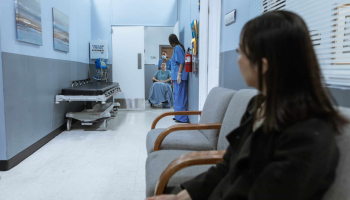
Hospice care is a service that provides comfort to terminally ill patients and their families. This type of care can be very helpful, but it’s also misunderstood by many people.
Many people have misconceptions about hospice care that make them reluctant to consider this option for themselves or a loved one.
There are several common myths about hospice care. We have decided to debunk some of these myths and mistruths. The following facts will help you learn more about the benefits of hospice and dispel some of these myths.
Myth: Hospice kills patients
This is an out and out lie.
Hospices do not kill patients.
They actually do take very good care of them. While it is true that many people die in our hospices, it is not that the caregivers kill them.
No, they are taken care of with dignity so that they can face their sunset days with bravado and hope. Drugs such as morphine that hospices give to patients are for pain management and not to speed up their dying process as most people seem to believe.
Myth: Hospice can only be done in a facility
A hospice is not a place. You do not have to go to a local hospice facility to receive hospice care. No, you could as well get hospice care from the comfort of your home. All that is required are some arrangements to have a doctor, nurse and counselor coming to your home to manage the way you are taking drugs, general hygiene and feeding.

Myth: Only patients with cancer can go to a hospice
This is not true at all. Patients with heart diseases, dementia, lung and kidney problems can all be admitted at the hospice. The only factor looked into when joining a hospice is that a doctor has written an order that you go there since other forms of curative treatment have failed.
Myth: Hospice is for the dying
While it is true that most patients go to the hospice when all other forms of curative treatment have failed and they are in their end of life phase, the hospice is not for the dying only. Some patients have actually left the hospice after sometimes and gone on to curative treatment at their own will. The hospice of course gives them a chance for readmission. At the hospice, caregivers are able to give hope, proper care, good nutrition, counselling and pain management to their patients.
Myth: Your family has no control over you once you join a hospice facility
This is another out and out lie. We always encourage family members to visit their patients so that they can feel connected even in their sunset days. Family members also play a key role in the type of medication and foods that you are given.
Myth: Hospices are only for Christians
There is no religious discrimination in our facilities. We admit everyone no matter whether they are Christians, Buddhists, Hindus or atheists.
Myth: Hospice and palliative care are the same thing
The two are different. Palliative care is given to you once you have been diagnosed with a terminal illness. You will continue taking treatment in a bid to heal you. Once doctors realize that the treatment cannot work, they recommend hospice care.
Myth: Hospice care is expensive
At most times, patients who have Medicare and Mediaid find that they do not have to cough a dime towards hospice care. All this is catered for by the insurance companies.
Myth: It is a place of elderly people
This is wrong. I have seen people as young as 24 come to the facility.
You have to give up your personal doctor

This is so false because you can come in with your personal doctor who will be checking up on you regularly as well as liasing with the caregivers at the hospice facility to track how well you are faring.
Myth: Hospice is for the patient only, not family
Hospice care is both for the patient and the family as well. Once the patient passes away, the hospice care workers have a duty to help the family go through the grief. The family therefore also benefits from the service.
Myth: Hospice care requires a Do not resuscitate (DNR) order
This is not true. Joining a hospice is not euthanasia. Hospices are there to provide the best care for you so that you can pass on peacefully.








